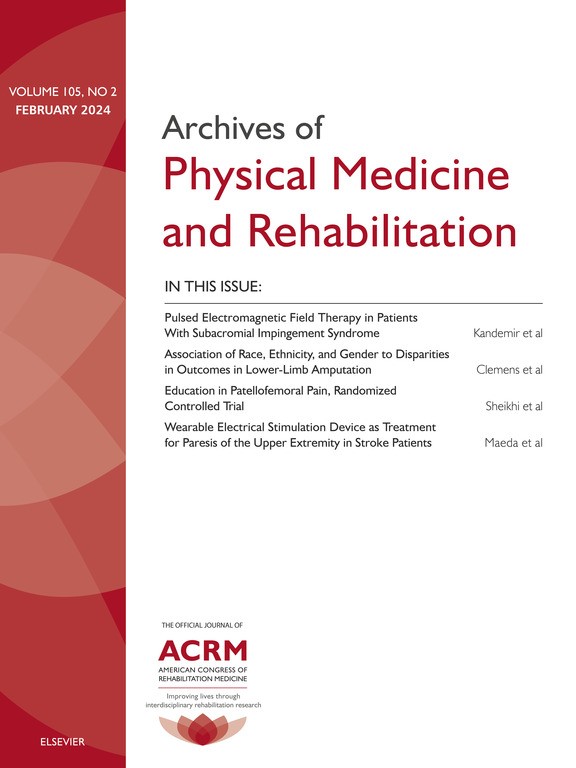
Thumb carpometacarpal osteoarthritis: Radial nerve mobilization as a possible treatment

Thumb carpometacarpal osteoarthritis: Radial nerve mobilization as a possible treatment
Radial nerve mobilization decreases pain sensitivity and improves motor performance in patients with thumb carpometacarpal osteoarthritis: a randomized controlled trial
Arch Phys Med Rehabil. 2012 Mar;93(3):396-403. doi: 10.1016/j.apmr.2011.08.045. Epub 2012 Jan 2Did you know you're eligible to earn 0.5 CME credits for reading this report? Click Here
Synopsis
60 patients with dominant-hand thumb carpometacarpal osteoarthritis (OA) were randomized into two groups to measure the effects of either radial nerve mobilization treatment or a nontherapeutic placebo treatment on pain sensitivity and pinch strength. At 2 months follow-up, patients who underwent radial nerve mobilization experienced a decrease in pain sensitivity in the trapeziometacarpal joint and an increase in tip and tripod pinch strength.
Was the allocation sequence adequately generated?
Was allocation adequately concealed?
Blinding Treatment Providers: Was knowledge of the allocated interventions adequately prevented?
Blinding Outcome Assessors: Was knowledge of the allocated interventions adequately prevented?
Blinding Patients: Was knowledge of the allocated interventions adequately prevented?
Was loss to follow-up (missing outcome data) infrequent?
Are reports of the study free of suggestion of selective outcome reporting?
Were outcomes objective, patient-important and assessed in a manner to limit bias (ie. duplicate assessors, Independent assessors)?
Was the sample size sufficiently large to assure a balance of prognosis and sufficiently large number of outcome events?
Was investigator expertise/experience with both treatment and control techniques likely the same (ie.were criteria for surgeon participation/expertise provided)?
Yes = 1
Uncertain = 0.5
Not Relevant = 0
No = 0
The Reporting Criteria Assessment evaluates the transparency with which authors report the methodological and trial characteristics of the trial within the publication. The assessment is divided into five categories which are presented below.
4/4
Randomization
4/4
Outcome Measurements
4/4
Inclusion / Exclusion
4/4
Therapy Description
3/4
Statistics
Detsky AS, Naylor CD, O'Rourke K, McGeer AJ, L'Abbé KA. J Clin Epidemiol. 1992;45:255-65
The Fragility Index is a tool that aids in the interpretation of significant findings, providing a measure of strength for a result. The Fragility Index represents the number of consecutive events that need to be added to a dichotomous outcome to make the finding no longer significant. A small number represents a weaker finding and a large number represents a stronger finding.
Why was this study needed now?
Thumb carpometacarpal OA affects many people, especially women, in Europe and the United States. The cause of this upper limb-related disability is a result of the modification of the trapeziometacarpal joint. Consequently, those with the condition have difficulty with pinch and grip strength and experience much pain. Thumb carpometacarpal OA may be treated by undergoing surgery, but it only results in partial improvement. Neurodynamic techniques have been suggested as additional treatments on top of surgery in managing pain and improving pinch strength, but not many studies have tested the outcomes of applying such methods. Hence, this study aimed to test the efficacy of the neurodynamic technique, radial nerve mobilization, in treating thumb carpometacarpal OA.
What was the principal research question?
Did radial nerve mobilization treatment for dominant-hand thumb carpometacarpal OA decrease pain sensitivity in the thumb and increase pinch strength, when measured over a 2 month period?
What were the important findings?
- PP-There was a significant improvement in PPT of the trapeziometacarpal joint between all assessments for the Radial Nerve Mobilization group (p<0.001), but not for the placebo group.
- There were significant improvements in PPT of the scaphoid and hamate bones between the first and second months of assessments for both groups, but no significant difference between groups (p=0.06).
- There was a significant difference in tip and tripod pinch strength between pre-treatment and post-treatment assessments for the Radial Nerve Mobilization group (p=0.04).
- There were no significant differences in tip and tripod pinch strength during assessments at 1 and 2 months following treatment between the Radial Nerve Mobilization group and the placebo group (p>0.05).T and pinch strength were measured prior to and 5 minutes, 1, and 2 months following to treatment.
What should I remember most?
The results displayed that radial nerve mobilization treatment of dominant-hand thumb carpometacarpal OA was effective in increasing mechanical pain sensitivity in the trapeziometacarpal joint and increasing tip and tripod pinch strength.
How will this affect the care of my patients?
Radial nerve mobilization was successful when focussing on its effects on neurophysiological function of patients. However, it is uncertain whether improvements would be observed if pain or disability scales for the hand were used instead. Future studies should incorporate these scales to measure outcomes and a larger sample size should be included.
Learn about our AI Driven
High Impact Search Feature
Our AI driven High Impact metric calculates the impact an article will have by considering both the publishing journal and the content of the article itself. Built using the latest advances in natural language processing, OE High Impact predicts an article’s future number of citations better than impact factor alone.
Continue



 LOGIN
LOGIN

Join the Conversation
Please Login or Join to leave comments.